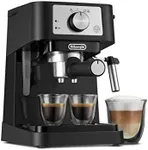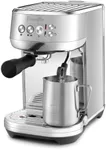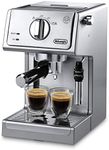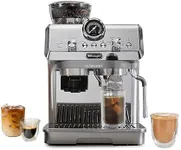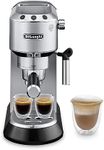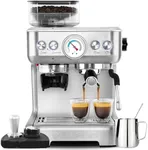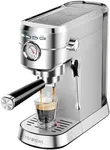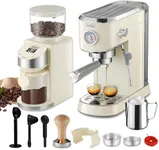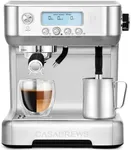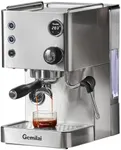Buying Guide for the Best manual espresso machines
Choosing the right manual espresso machine can be a rewarding experience, especially if you are passionate about coffee. Manual espresso machines, also known as lever machines, give you full control over the brewing process, allowing you to craft your perfect cup of espresso. When selecting a manual espresso machine, it's important to consider several key specifications to ensure you get the best fit for your needs and preferences.Type of LeverManual espresso machines come with either a spring piston lever or a direct lever. The type of lever affects how you control the pressure during extraction. Spring piston levers use a spring to help push the water through the coffee grounds, making it easier to achieve consistent pressure. Direct levers rely entirely on your manual force, giving you more control but requiring more skill and effort. If you are a beginner, a spring piston lever might be more suitable, while experienced baristas might prefer the direct lever for its precision.
Boiler Type and SizeThe boiler is responsible for heating the water used to brew your espresso. Manual espresso machines can have single or dual boilers. Single boilers are more compact and heat water for both brewing and steaming, but you may need to wait between brewing and steaming. Dual boilers have separate boilers for brewing and steaming, allowing you to do both simultaneously. The size of the boiler also matters; larger boilers can maintain temperature stability better but may take longer to heat up. If you frequently make multiple drinks or need to steam milk, a dual boiler might be more convenient.
Pressure GaugeA pressure gauge displays the pressure at which water is being pushed through the coffee grounds. This is crucial for achieving the perfect extraction, as too much or too little pressure can affect the taste of your espresso. Machines with a built-in pressure gauge allow you to monitor and adjust the pressure more accurately. If you are new to manual espresso machines, having a pressure gauge can help you learn and perfect your technique.
Build Quality and MaterialsThe build quality and materials of a manual espresso machine affect its durability and performance. High-quality machines are often made from stainless steel, brass, or chrome, which are durable and resistant to corrosion. Plastic components may be less durable and affect the machine's longevity. If you plan to use your machine frequently, investing in one with high-quality materials can ensure it lasts longer and performs consistently.
Portafilter SizeThe portafilter is the component that holds the coffee grounds during extraction. Portafilter sizes can vary, with common sizes being 49mm, 51mm, and 58mm. Larger portafilters, like the 58mm, allow for more coffee grounds and can produce a richer shot of espresso. Smaller portafilters are easier to handle and may be suitable for beginners. Consider your experience level and the type of espresso you prefer when choosing the portafilter size.
Ease of Use and MaintenanceManual espresso machines require regular maintenance to keep them in good working condition. Some machines are easier to disassemble and clean than others. Look for machines with removable parts and clear instructions for maintenance. If you are new to manual espresso machines, choosing one that is user-friendly and easy to maintain can make your experience more enjoyable and less time-consuming.


